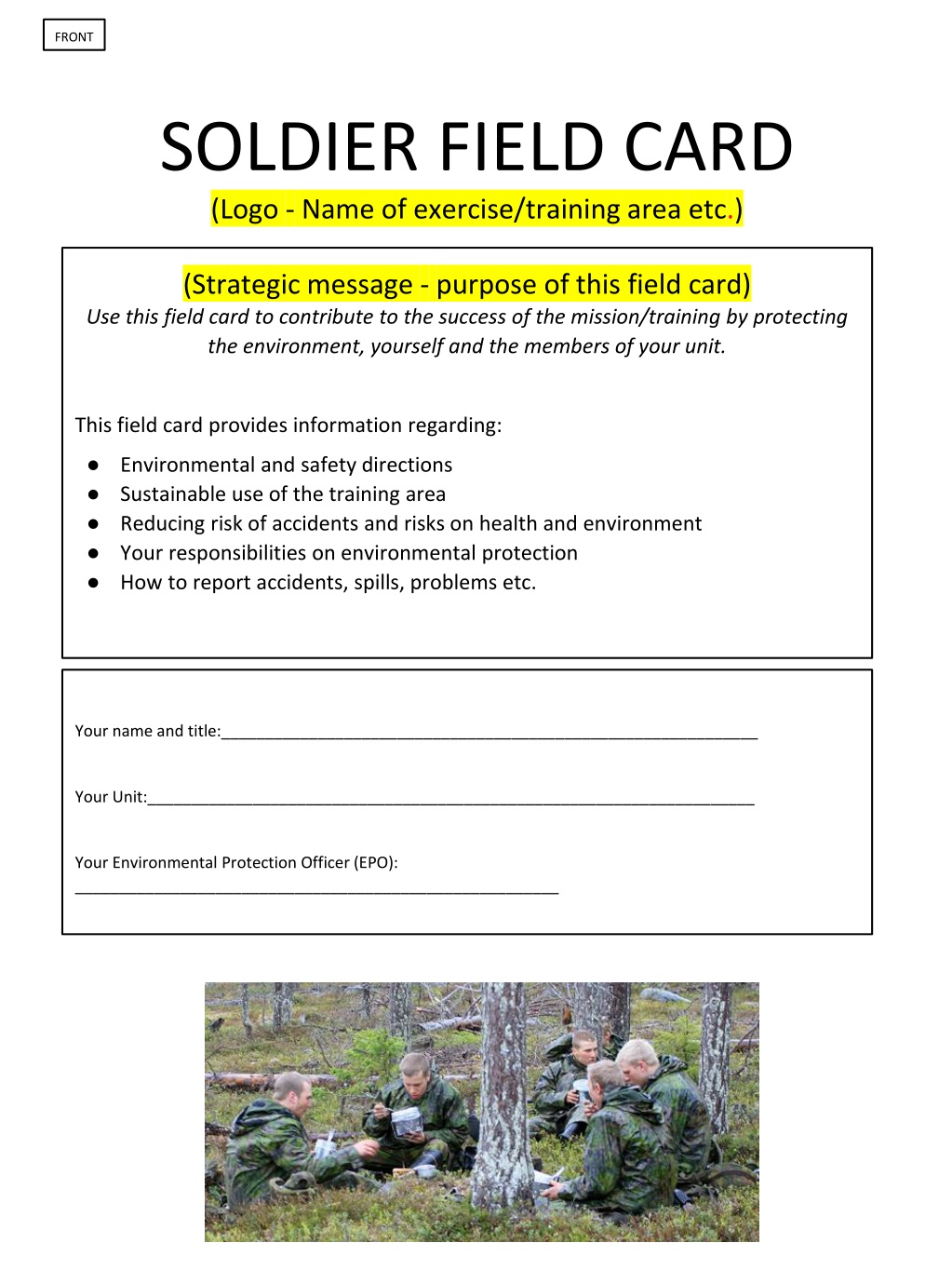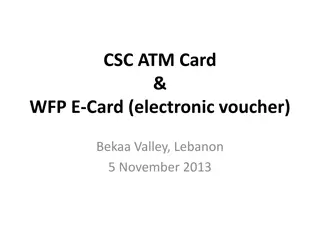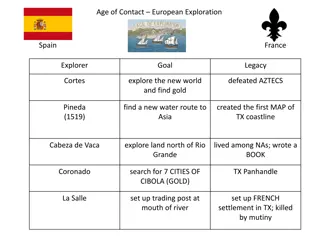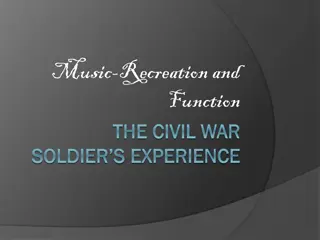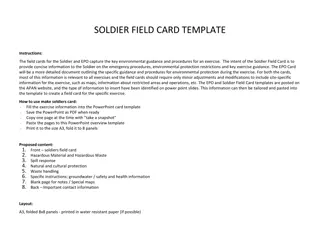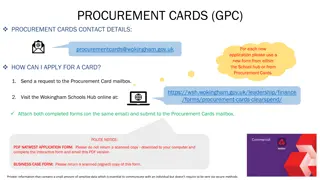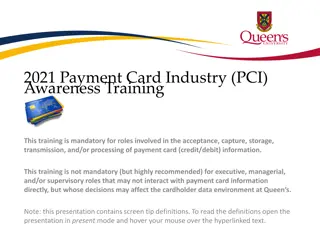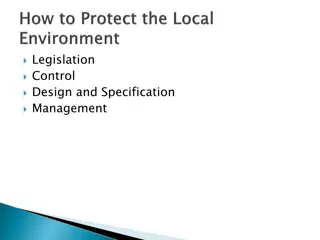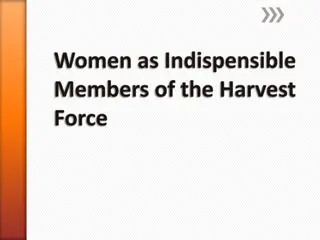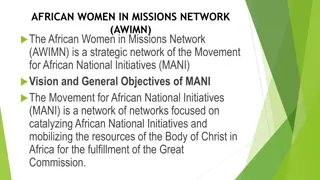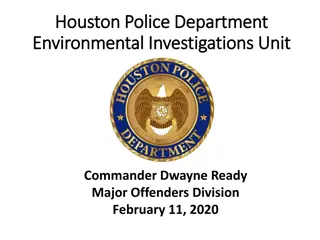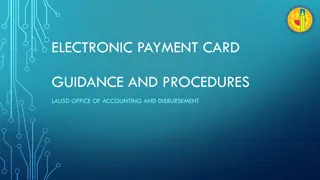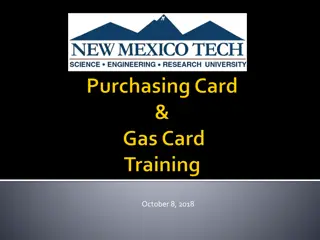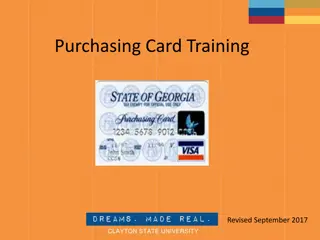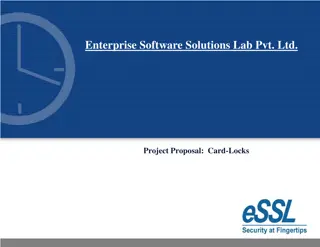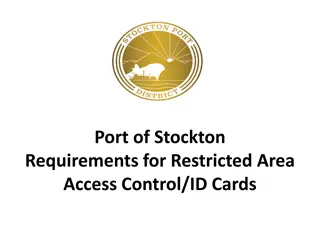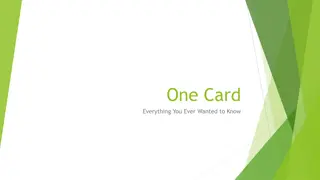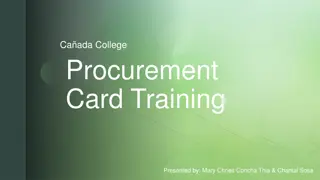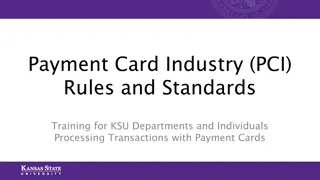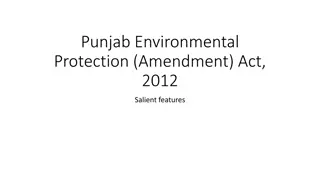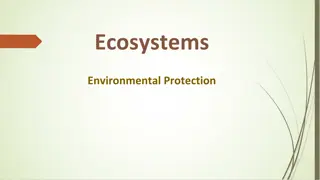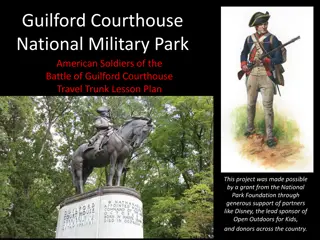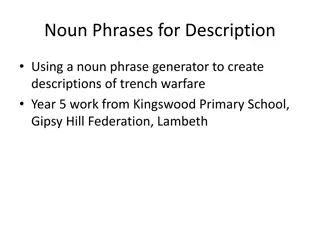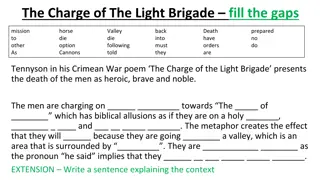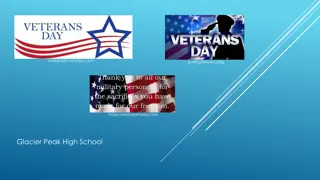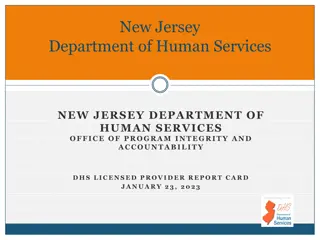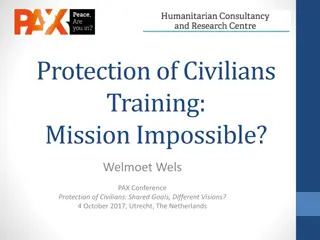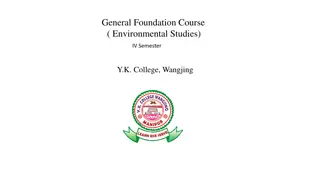Environmental Protection Field Card for Soldiers - Protecting Nature and Unit During Missions
This environmental protection field card serves as a guide for soldiers to contribute to mission success by safeguarding the environment, themselves, and unit members. It includes instructions on spill response, spill prevention, natural and cultural protection, and vehicle movement to minimize risks and protect the surroundings during training exercises. By following the guidelines outlined on the card, soldiers can actively participate in sustainable and responsible practices while enhancing mission effectiveness.
Download Presentation

Please find below an Image/Link to download the presentation.
The content on the website is provided AS IS for your information and personal use only. It may not be sold, licensed, or shared on other websites without obtaining consent from the author. Download presentation by click this link. If you encounter any issues during the download, it is possible that the publisher has removed the file from their server.
E N D
Presentation Transcript
FRONT SOLDIER FIELD CARD (Logo - Name of exercise/training area etc.) (Strategic message - purpose of this field card) Use this field card to contribute to the success of the mission/training by protecting the environment, yourself and the members of your unit. This field card provides information regarding: Environmental and safety directions Sustainable use of the training area Reducing risk of accidents and risks on health and environment Your responsibilities on environmental protection How to report accidents, spills, problems etc. Your name and title:_____________________________________________________________ Your Unit:_____________________________________________________________________ Your Environmental Protection Officer (EPO): _______________________________________________________
1 SPILL RESPONSE (Insert specific information, local routines and instructions) If you can't handle the spill, call Emergency! YOU SPILL YOU DIG! The sooner you start digging the easier it will be - time saves sweat. SPILL PREVENTION Remove the source Stop the continuing release of HW Envelop the spill Encircle the spill area with absorbent materials to stop the spread of the hazmat or HM Absorb/accumulate Use absorbent materials to soak up the spill substance Containerize/clean up Collect the soiled materials and place in the appropriate container Tell your EPO Report the incident to your units EPO Have spill kits / equipment on hand for example containers, drip pans and absorbent material Use a nozzle and absorbent mat under jerry/fuel cans to avoid spill Obey restriction areas (maps) Do not locate refueling points within 200 m of lakes and water courses Use only approved refueling points Used soil materials and absorbent materials needs to be treated like Hazardous Waste Report all POL spills! Local environmental POC tel:____________ 1 liter of POL could contaminate up to a 1 000 000 liters of fresh water.
2 NATURAL & CULTURAL PROTECTION (Insert specific information, local routines and instructions) Natural Resources: Don't cut of branches or trees for camouflage without permission Don't dig holes without a permission Cultural Properties and Resources: Respect and do not damage grave sites, historical and archaeological sites Sites may not be modified, destroyed, or defaced Do not collect artefacts as souvenirs Report the discovery of any artefacts to the Environmental Protection Officer Water protection: Protect all water sources from contamination Wastewater is not to be disposed of in any waterway or wetland Vehicle, generators, and camp activities must be placed 200 m from all water sources Water/river crossings only in designated places Animals Do not harass, capture, touch or kill fish and wildlife Do not feed, adopt or buy wildlife Report injured animals to the Environmental Protection Officer Nature Conservation areas Respect the signs and restricted areas for example NATURA 2000 nature reserved areas Private land Do not harass, capture, touch, or kill, fish and farm animals Obey street / area limits Report Complaints from the landowners / civilians Spills, accidents and damages Damages to the property, land, roads, fences Cultural/natural resource damages Vehicle movement Keep to set speed limits Drive on established roads except when instructed otherwise during tactical deployment Manoeuvre in designated areas only Avoid unnecessary destruction of vegetation Avoid sharp turns when possible Turn off vehicle engines when not moving
3 HAZARDOUS MATERIALS & WASTE (Insert specific information, local routines and instructions) HAZARDOUS WASTE (HW) HAZARDOUS MATERIALS (HM/Hazmat) A Hazardous waste (HW) is discarded material (either solid, liquid or gas) that is potentially dangerous to human health or the environment A Hazardous materials (Hazmat) is a substance considered to be harmful to human health or the environment Deliver hazardous waste and POL products to a designated waste collection point Hazardous material must be labeled Labels must include written information what it is and why it is hazardous HW are separated from usable hazmat and nonhazardous wastes Handle HM/Hazmat carefully Use drip pans and absorbent material or mat always when handling Hazmat All containers holding free liquids require secondary containment Hazard signs are posted for each type of waste Store Hazmat only in designated areas with secondary containment. Separation (ask your EPO) Safety Use Personal Protective Equipment (PPE) Examples: Used batteries, discarded chemicals, POL- contaminated soil Examples: Fuel, engine oil, bleach (chlorine), solvents
4 WASTE HANDLING (Insert specific information, local routines and instructions) Waste must never be left in the field Do Not Litter! Collect all waste in appropriate containers at approved collection points Waste should be sorted according to [specific regulations] Disposal and burning of waste is strictly forbidden - do not bury or burn any waste Use permanent or portable latrines for human waste Collect Hazardous Waste always separately Insert here the specific regulations of waste sorting. For example: Burnable: Paper, plastics, packages Biodegradable Food waste Cardboard Plastics Metal, brass cartridges Latrine Hazardous waste
5 NOTES (Insert specific information, local routines and instructions) Your own notes: Insert special maps, graphics, etc.
6 BLANK PAGE (Insert specific information, local routines and instructions) Use this Blank Page for any important issues you need to emphasize. There are some topics and issues you may want to bring up in slides 9 and 10. Blank page for important issues Blank page for important issues Blank page for important issues
BACK IMPORTANT CONTACTS (Insert important contact information, call signs, frequencies etc.) Contacts Emergency Ambulance Fire Police MEDEVAC Range safety Firing desk Environmental Protection Officer FIRST AID INFORMATION MEDEVAC INFORMATION / MIST Location Call sign and radio frequency Contact information Frequencies Call signs
6 BLANK PAGE (Insert specific information, local routines and instructions) Use this Blank Page for any important issue you need to emphasize. There are some topics and issues you may want to bring up: Safety and Health Protection: Pesticides and deceases Weather conditions Poisonous plants, insects, snakes PROTECTING GROUNDWATER AND SOIL Training areas are important groundwater areas Groundwater level can be very near to the ground surface at some places and the soil can be very permeable so all possible leaks, spills and environmental incidents must be notified and cleaned. Any activities around groundwater intake structures and wells are prohibited (protection zones!) There are several wells in the area (protection zone around wells 200 m) Ensure you have spill response equipment! Redeployment Considerations: WHEN YOU LEAVE THE TRAINING AREA Only use designated vehicle and equipment wash facilities Confirm all fighting positions, foxholes, and trenches are properly closed. Collect all communication, electrical, and obstacle wires Dispose of all waste and litter Mark and report unexploded munitions Report contain and cleanup spills Inspect all sites before departing
6 BLANK PAGE (Insert specific information, local routines and instructions) Use this Blank Page for any important issue you need to emphasize. There are some topics and issues you may want to bring up: Live Ammunition What to do if found Media guidelines Don t: Lie to the reporter Discuss sensitive information Speak for the Command or your friends, or on behalf of other agencies Discuss details of serious incidents / accidents or speculate Let the situation or reporter rush you Do: Be honest, but remember OPSEC Check your appearance; remove your sunglasses Avoid military acronyms Talk about personal experiences Stay in your lane Say I don t know if you don t know Social media guidelines Soldiers, civilian and contractor employees are encouraged to use their personal social media accounts while deployed to Europe Remember OPSEC. Don t post sensitive information or details about troop movements or events until after they have occurred Even if your social media accounts are locked or hidden, it is considered worldwide release. Your posts, photos, and comments are a direct reflection upon you, your unit, and the military
